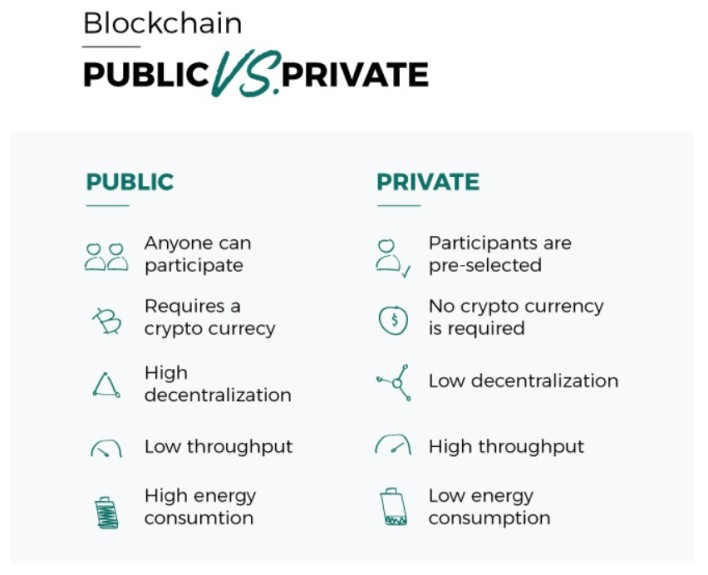
Zigurat Global Institute of Technology
Blog / Leadership & Transformation
Categories

In blockchain discourse, we often hear about public vs private blockchain or open vs closed blockchain. Perhaps you've also heard about permissionless and permissioned blockchains. In this post, we're going to investigate what is this all about.
Many industries have already tapped into the blockchain magic. Thanks to offering a distributed ledger solution to recording transactions on a chain, its application benefits are practically endless. But to cater to all those different industries and uses, there are actually two different types of blockchain that each have its own story to tell.
Every now and then, we go over the very meaning of some concepts often heard in the blockchain sphere. Our latest dive was into the differences between ICOs and STOs. Today, we turn to public vs private blockchain and map the characteristics that make them different.

A public blockchain is a blockchain that is open to the public and that anyone can join without specific permission. All people who join the network can read, write, and participate in this network that is not controlled by anyone.
Private Blockchain is invitation-only and anyone who wishes to access it must ask for permission from the governing body of the blockchain. They allow different levels of access that determine which users can write, read and audit the blockchain.
Public blockchains are immutable and decentralized. No one can change an entry once it has been validated and the users can be sure that their transactions are not modified or deleted.
In this case, organizations use the distributed ledger technology but they don’t make their data public. Private blockchains do not offer the same level of decentralized security as their public counterparts, meaning the entries can be altered by its owner.
Cryptocurrencies, such as bitcoin, Litecoin, Ethereum use public blockchains and get the most attention. But they can be also used by governments for a voting platform or keeping the healthcare records. In these platforms anonymity and transparency are the key features. Public blockchain is more a Business to Consumer solution.
Private blockchain requires each user to have a verified identity since that defines the type of access they have. These are popular enterprise solutions that allow controlling the resources and actions that everyone carries out. They permit faster transactions and are more energy-efficient to maintain. Maybe to manage supplier-vendor relationships or for creating a shared infrastructure between enterprises, a private blockchain is the go-to solution for corporate and business to business scenarios.
So that would be public and private blockchain at a glance. The most important difference is the role of the user on the network and how the identity is managed. In a private blockchain, the creator of the network knows from the beginning who the participants are. On a public network, you can't build a permission-based solution and the users have all guarantees of anonymity.
Get started with your Blockchain projects!


Zigurat Global Institute of Technology